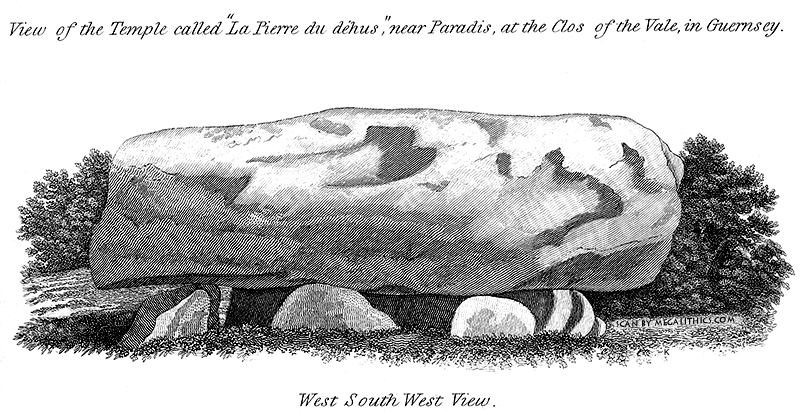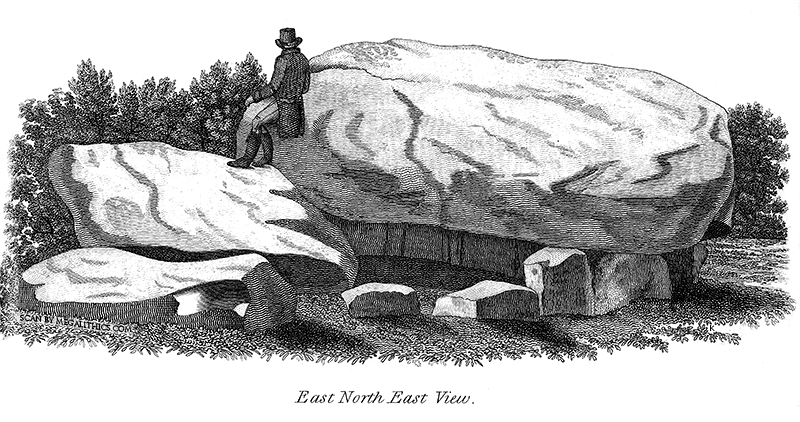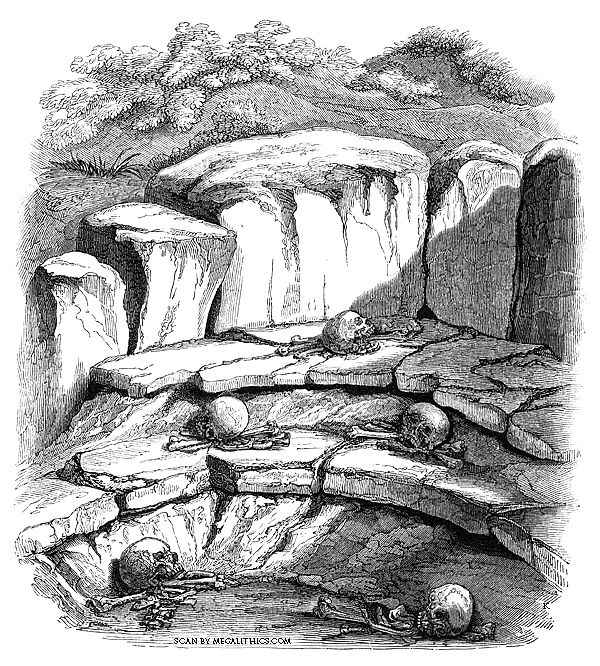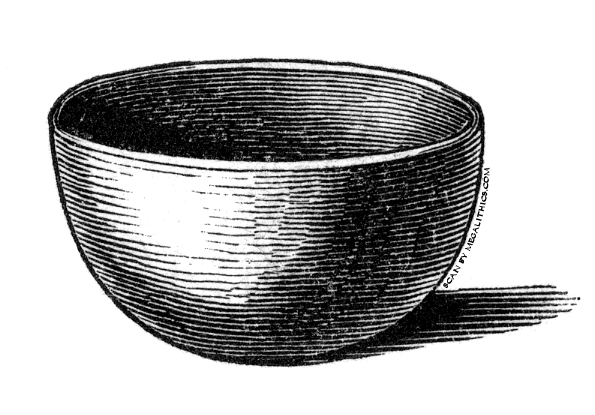 |
Archaeologia, 17, p.254-66, 1813.
The monument is shown here in its unexcavated form, the Lukis family would not start digging here for another 24 years.
 |
Here we see capstone 1, the
largest, the stones supporting it are the very tops of the slabs of the rear
wall of the
main chamber.
 |
This view has capstone 1 in
the background with the very top of the main chamber space beneath it. The main
SE section
of the broken capstone 2 is next, presumably still supported by the central
pillar which is completely buried. The broken NW section,
of this capstone, bearing the face of the carving, lies buried on the main
chamber floor metres below, the "body" section of this carving
is on the underside of the exposed piece, below the gentleman's boots, it will
not be discovered for another 100 years.
The stone
in the foreground is probably capstone 3.
 |
Note the shape of capstone
2, unknown to the author the broken NW end lies buried on the floor of the main
chamber below.
Archaeologia, 35, p.232-58, 1853.
 |
This engraving poses a
puzzle, Lukis identifies it as one of the Dehus side-chambers but claims the
engraving of chamber D below shows "another" chamber to the one above. The illustration clearly
shows two levels of stone
slab pavement with skeletal remains on these and the natural. Lukis found only
one side-chamber at Dehus
with this arrangement, and that is chamber D.
These two engravings must be of the same side-chamber (D), at different stages of excavation.
This is a view of
side-chamber D excavated to the natural.
The bones shown represent the two upright crouched inhumations Lukis
discovered here,
they were found at the south east and the west, facing and in contact with the wall slabs.
The inverted bowl (see below) resting on three stones covered bones from the fore part of a
human chest
leading Dr. Lukis to speculate that a human heart had been buried here. The
additional presence of both
clavicles and a vertebra being put down to accident.
Note the ends of the passage roof slabs in the background.

Lukis' engraving of the famous "heart
sacrifice" bowl, of light buff ware, this vessel
stands 9cm high with a diameter at the mouth of 16cm.